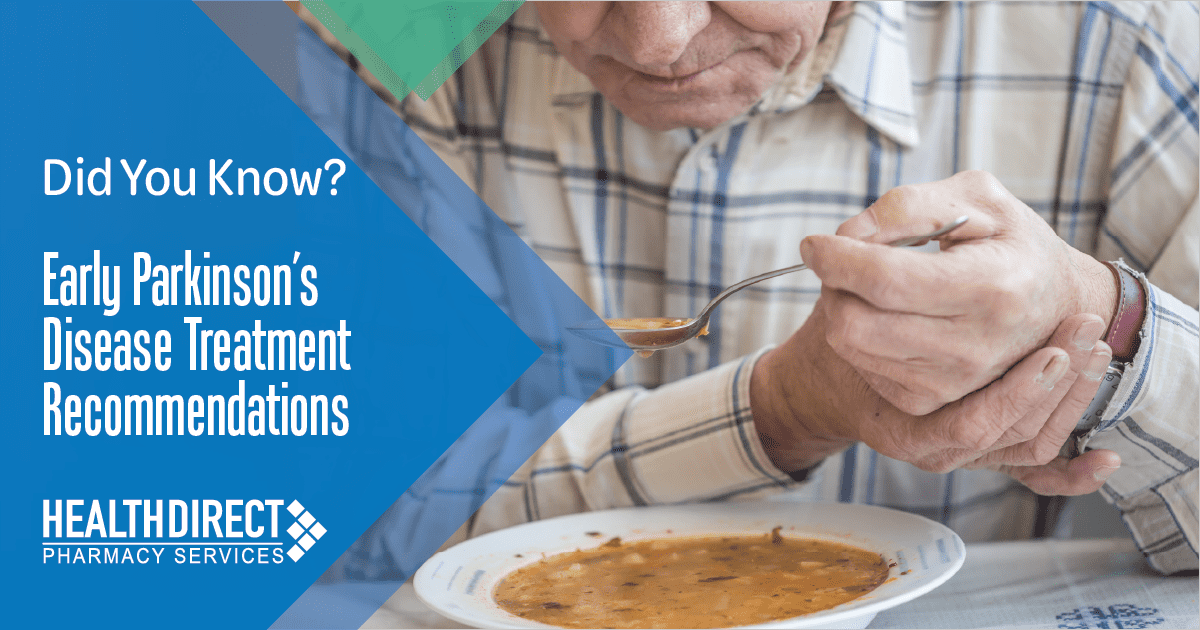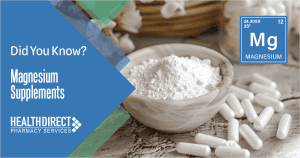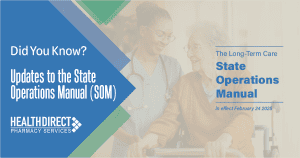Parkinson’s Disease – Awareness Month Spotlight
Parkinson’s disease is a chronic, progressive neurodegenerative disease that affects movement. Cardinal motor symptoms include resting tremor, commonly described as “pill-rolling,” rigidity, bradykinesia (slow movement), and postural instability. In addition to affecting the motor system, it can also have neuropsychiatric and other nonmotor manifestations.
- There is no cure or effective disease modifying therapy. Treatment is focused on management of motor and nonmotor symptoms and complications. Below, we focus on therapies that target motor symptoms.
- Goals of motor symptom management include:
Minimizing motor symptoms and complications
Maximizing functional status and QOL
Minimizing adverse effects of medications
- Because dopamine depletion is a major cause of motor symptoms, many treatments are focused on targeting this neurotransmitter. Efficacy is not the same for all anti-parkinson’s medications. As you move down the chart below, the efficacy of the medication class and their ability to control motor symptoms, decreases.
- Treatment selection should take into consideration patients age, functional impairment, presence of cognitive impairment, comorbidities, medications, and drug related characteristics.
- Guidelines for treatment of early disease1:
- Guidelines recommend levodopa is prescribed as the initial preferential dopaminergic therapy at the lowest effective dose to optimize benefit and minimize risk of dyskinesia (involuntary, erratic writhing movements of the face, arms, legs, or truck).
- Levodopa is more likely than initial treatment with dopamine agonists to cause dyskinesia during the 1st 5 years of treatment, but the prevalence is low.
- Those at an increased risk of levodopa-induced dyskinesia include: younger age at disease onset, lower body weight, female sex, and increase disease severity.
- Studies in early PD comparing IR levodopa to CR levodopa or levodopa/carbidopa/entacapone have not shown differences between improvement in motor symptoms, dyskinesia, hallucinations, or AE-related discontinuation. IR is typically favored due to the CR formulations lower bioavailability and less predictable symptom relief compared to the IR formulation. IR is also less costly.
- Patients at a higher risk of medication-related adverse effects (>70 years old, history of impulse control disorders (ICD’s), or patients with preexisting cognitive impairment, excessive daytime sleepiness, or hallucinations), should not be prescribed dopamine agonists (DA).
- Those at an increased risk of DA-induced ICD’s include: male sex, younger age, history of ICDs, history of mood disorders, apathy, and a family history of ICDs and addiction.
- Guidelines state that dopamine agonists (DAs) may be prescribed as the initial dopaminergic therapy to improve motor symptoms in select early PD patients <60 years who are at a higher risk for the development of dyskinesias.
- Studies demonstrate greater improvement in mobility with levodopa than with MAO-B inhibitors, a higher risk of AE-related discontinuation with MAO-B inhibitors, and >60% of individuals randomized to MAO-B inhibitors will require additional therapy within 2-3 years.
| Dopamine Precursor Carbidopa/levodopa (Sinemet) | MOST EFFICACIOUS THERAPY • Levodopa is converted into dopamine in the brain • Can be given with meals upon initiation of therapy to decrease nausea risk. Once adjusted, it should be given at least 30 min prior to meals to maximize absorption. • Advantages: potent, better tolerability •Disadvantages: short half-life, so needs to be dosed multiple times a day. Risk of dopinergic motor complications. | |
| Non-Ergot Dopamine Agonists Ropinirole (Requip), Pramiprexole (Mirapex), rotigotine (Neupro) | SECOND MOST POTENT THERAPY • Can be used as monotherapy or adjunct • Advantages: longer-half life, so can be dosed once daily. Lower risk of motor complications. • Disadvantages: greater incidence of hallucinations, orthostasis, pedal edema, excessive daytime sleepiness, and impulse control disorders. Older adults are at a greater risk of these adverse effects. | |
| MAO-B inhibitors (Rasagiline, Selegiline) | • Prevent an enzyme (MAO-B) from breaking down dopamine • Risk of serotonin syndrome with SSRIs • Selegiline more likely to cause confusion, limiting its use in older adults | |
| Amantadine | • Indirectly increases dopamine release • Mild improvement of motor symptoms. Suitable for those with dyskinesia • Most common adverse effects: mild anticholinergic effects, hallucinations, dizziness | |
| Anticholinergics Benztropine (Cogentin), Trihexyphenidyl (Artane) | • Limited efficacy. Do not work for bradykinesia or rigidity symptoms • Not preferred in older adults due to adverse effects (delirium, cognitive impairment, constipation, dry mouth, dry eyes, urinary retention) | |
| ↓ EFFICACY DECLINES AS YOU MOVE DOWN THIS CHART ↓ |
Reference:
- Dopaminergic Therapy for Motor Symptoms in Early Parkinson Disease Practice Guideline Summary. A Report of the AAN Guideline Subcommittee. Tamara Pringsheim, Gregory S. Day, Don B. Smith, Alex Rae-Grant, Nicole Licking, Melissa J. Armstrong, Rob M.A. de Bie, Emmanuel Roze, Janis M. Miyasaki, Robert A. Hauser, Alberto J. Espay, Justin P. Martello, Julie A. Gurwell, Lori Billinghurst, Kelly Sullivan, Michael S. Fitts, Nicholas Cothros, Deborah A. Hall, Miriam Rafferty, Lynn Hagerbrant, Tara Hastings, Mary Dolan O’Brien, Heather Silsbee, Gary Gronseth, Anthony E. Lang, on behalf of the Guideline Subcommittee of the AAN. Neurology Nov 2021, 97 (20) 942-957; DOI: 10.1212/WNL.0000000000012868




